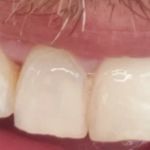How to Treat Gum Disease Without Surgery
- 1. Understanding Gum Disease
- 2. Causes and Symptoms of Gum Disease
- 3. Non-Surgical Treatment Options for Gum Disease
- 4. Preventing Gum Disease Before It Requires Surgery
- 5. Real-Life Experience of Treating Gum Disease Without Surgery
1. Understanding Gum Disease
Gum disease, also known as periodontal disease, is an infection of the tissues that surround and support your teeth. It begins with gingivitis, a mild form of gum disease that causes inflammation and irritation of the gums. If left untreated, gingivitis can advance to periodontitis, a more severe form that can lead to tooth loss. Gum disease is a common problem, but with early detection and proper care, it can often be managed without the need for surgery.
2. Causes and Symptoms of Gum Disease
Gum disease is primarily caused by poor oral hygiene, which leads to plaque buildup on the teeth. Plaque is a sticky film of bacteria that can cause infections in the gums if not removed regularly. Other factors that contribute to gum disease include smoking, diabetes, certain medications, genetics, and poor nutrition.
Common symptoms of gum disease include:
- Red, swollen, or bleeding gums
- Persistent bad breath
- Loose teeth or receding gums
- Pain while chewing
If you experience any of these symptoms, it is important to seek treatment early to prevent the condition from worsening and potentially requiring surgery.
3. Non-Surgical Treatment Options for Gum Disease
While surgery may be necessary for severe gum disease, many cases can be managed without invasive procedures. Here are some effective non-surgical treatments for gum disease:
- Scaling and Root Planing: This deep cleaning procedure removes plaque and tartar from below the gum line, smoothing the surfaces of the roots to help the gums reattach to the teeth.
- Antibiotics: Topical or oral antibiotics may be prescribed to help reduce bacteria and inflammation in the gums.
- Laser Treatment: Laser technology can be used to remove infected tissue and promote healing with minimal discomfort and recovery time.
- Improved Oral Hygiene: Regular brushing and flossing, along with the use of an antimicrobial mouthwash, are essential for preventing and managing gum disease.
- Smoking Cessation: Quitting smoking is one of the most effective ways to prevent gum disease and improve overall oral health.
These treatments can significantly improve gum health, reduce symptoms, and prevent the need for surgical intervention in many cases.
4. Preventing Gum Disease Before It Requires Surgery
Prevention is key when it comes to gum disease. By maintaining good oral hygiene and adopting healthy lifestyle habits, you can reduce the risk of gum disease and avoid the need for surgery:
- Brush your teeth twice a day with fluoride toothpaste to remove plaque and bacteria.
- Floss daily to clean between the teeth and along the gumline where your toothbrush may not reach.
- Use an antibacterial mouthwash to help kill bacteria and prevent infection.
- Eat a balanced diet rich in vitamins and minerals to support gum health.
- Visit your dentist regularly for professional cleanings and check-ups to catch any signs of gum disease early.
By following these simple practices, you can significantly reduce the likelihood of developing gum disease and avoid the need for surgery.
5. Real-Life Experience of Treating Gum Disease Without Surgery
Take the case of Karen, a 45-year-old woman who had been experiencing swollen, bleeding gums for months. After visiting her dentist, she was diagnosed with early-stage periodontitis. Instead of opting for surgery, Karen followed a treatment plan that included scaling and root planing, along with antibiotics to help reduce the infection. She also improved her at-home oral care routine by brushing twice a day, flossing regularly, and using an antimicrobial mouthwash. After several months of diligent care, Karen’s gums healed, and her symptoms were significantly reduced. She avoided surgery and was able to maintain her gum health with continued preventive care.







 Maui Whitening Orlando4.0 (32 review)
Maui Whitening Orlando4.0 (32 review) Bloomington Southside Dental Care3.0 (26 review)
Bloomington Southside Dental Care3.0 (26 review) Christiana Dental Center4.0 (650 review)
Christiana Dental Center4.0 (650 review) Carolina Dental Arts - New Bern Ave4.0 (152 review)
Carolina Dental Arts - New Bern Ave4.0 (152 review) Equitas Health Short North Medical Center3.0 (96 review)
Equitas Health Short North Medical Center3.0 (96 review) Prosthodontics of Madison - Kendra Schaefer, DMD & Christine Roenitz, DMD4.0 (25 review)
Prosthodontics of Madison - Kendra Schaefer, DMD & Christine Roenitz, DMD4.0 (25 review) The Importance of Oral Health Education During Pregnancy for a Healthy Pregnancy
The Importance of Oral Health Education During Pregnancy for a Healthy Pregnancy Best Tips for Brushing Your Teeth Properly for Healthy Gums: Essential Techniques for Oral Health
Best Tips for Brushing Your Teeth Properly for Healthy Gums: Essential Techniques for Oral Health Why Skipping Dental Checkups Can Lead to Bigger Oral Health Problems
Why Skipping Dental Checkups Can Lead to Bigger Oral Health Problems Advantages of Porcelain Dental Restorations
Advantages of Porcelain Dental Restorations How Can Diabetes Cause Tooth and Gum Problems? Preventing and Managing Oral Health Issues
How Can Diabetes Cause Tooth and Gum Problems? Preventing and Managing Oral Health Issues Healthy Habits for Promoting Good Oral Health and Hygiene: Tips for a Healthy Smile
Healthy Habits for Promoting Good Oral Health and Hygiene: Tips for a Healthy Smile